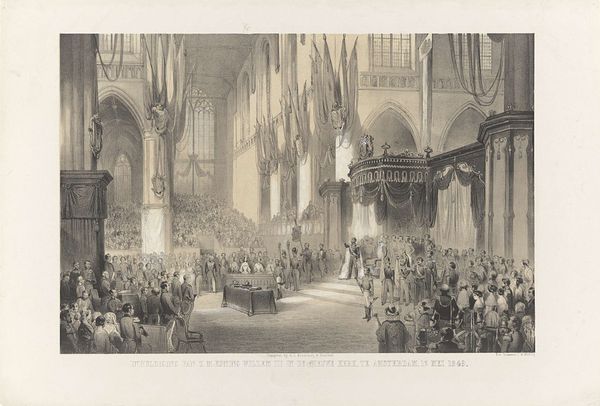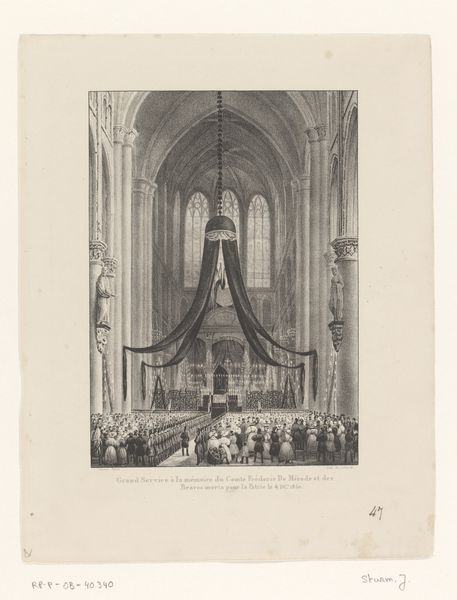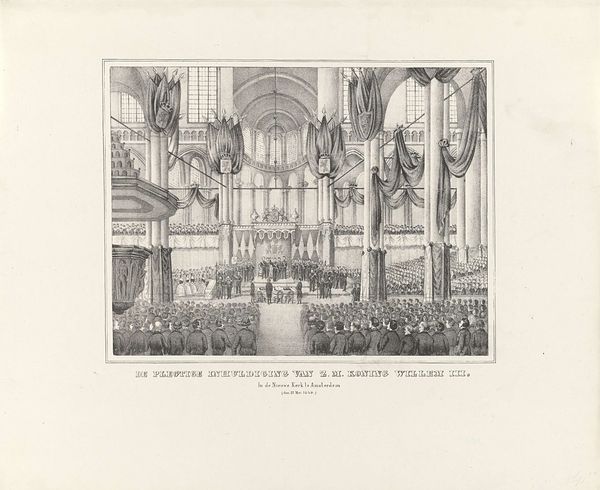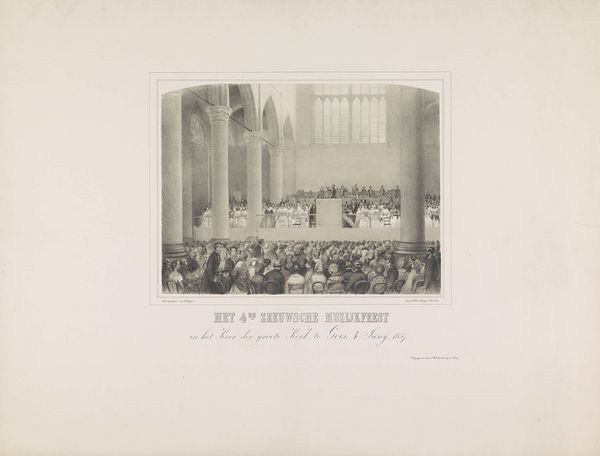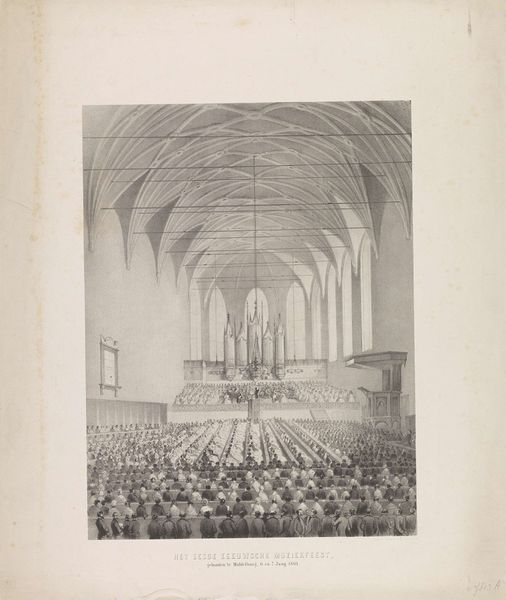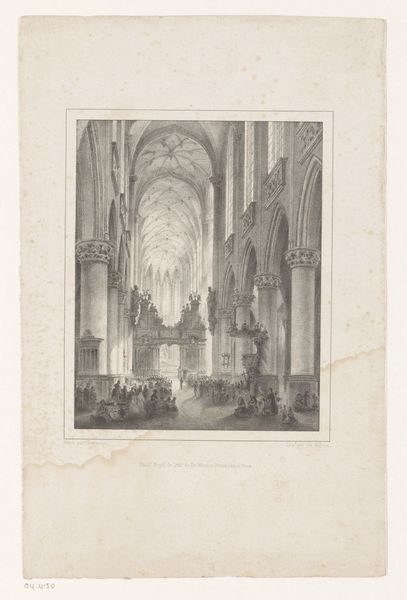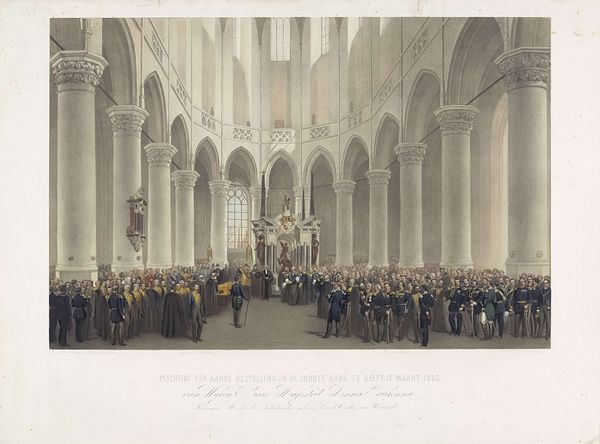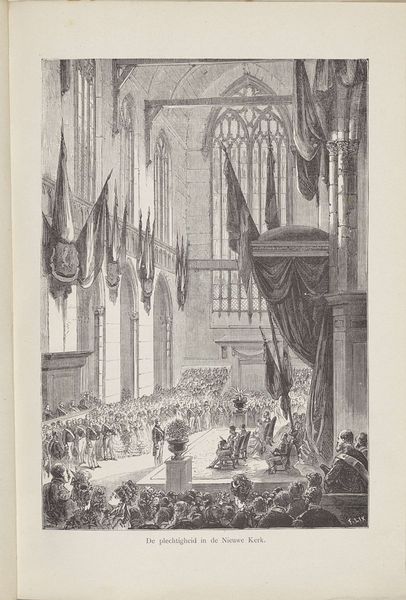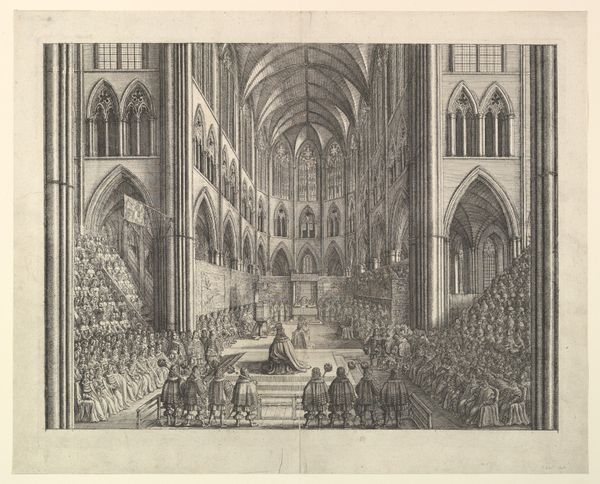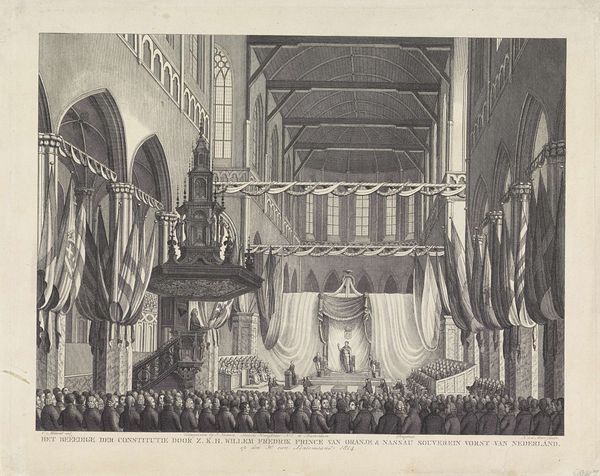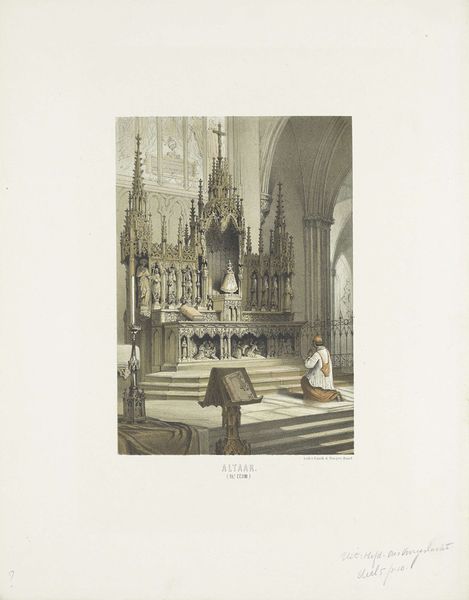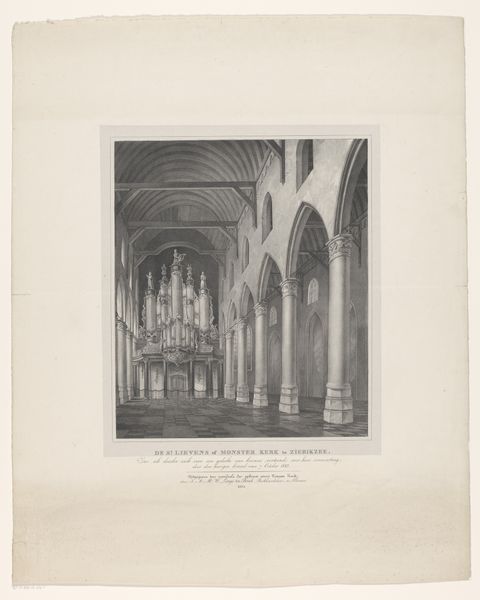
print, engraving, architecture
# print
#
landscape
#
genre-painting
#
engraving
#
architecture
#
realism
Dimensions: height 366 mm, width 445 mm
Copyright: Rijks Museum: Open Domain
Curator: This engraving from 1875 depicts De Pieterskerk in Leiden on the 8th of February. It shows a service in progress, a sea of attendees filling the church. What's your immediate reaction? Editor: The sheer density of the crowd! There's almost an oppressive feeling of confinement created by that mass of people contained within such grand architecture. The somber palette reinforces this feeling of almost stifled reverence. Curator: The artist’s choice of perspective certainly enhances that sense of scale and population. Consider the historical and social context: large church attendance in that period reflects societal norms and perhaps compulsory attendance depending on their belief. Think about social cohesion, control, even surveillance. Editor: Absolutely. We have to consider this image in relation to the changing roles of the church at this point in history, thinking of how that massive attendance is reflective of faith or perhaps societal pressures being reinforced through architecture and the presence of others. How did gender and class function within this specific setting and how could that inform people’s behaviours at church? Curator: Indeed. And it’s also fascinating to see how architectural spaces like churches visually manifest religious authority and the gendered aspect is especially thought provoking when considering space, power, and conformity within 19th century Protestant communities. Editor: Looking at the realism of the scene, with those rows and rows of individual faces despite being relatively undetailed, begs the question of truth versus representation. What narratives are prioritized in representing community worship. Who's perspective is captured, and who remains unseen? Curator: That invites considering the biases inherent in the representation of any collective event. There are fascinating lines of inquiry we could follow there with the public role of art and how power is asserted in its imagery, which prompts interesting conversations regarding accessibility, inclusivity, or the limitations present within these older institutions. Editor: It gives a whole new dimension of understanding to see an apparently serene religious moment in a new complex reality with socio-political conditions Curator: It's images like these that force us to interrogate the past through a contemporary lens. They provoke discussions on faith, society, and individual identity. Editor: Precisely! They force a deeper engagement beyond the surface representation and challenge our own assumptions about those we deem to be other.
Comments
No comments
Be the first to comment and join the conversation on the ultimate creative platform.
